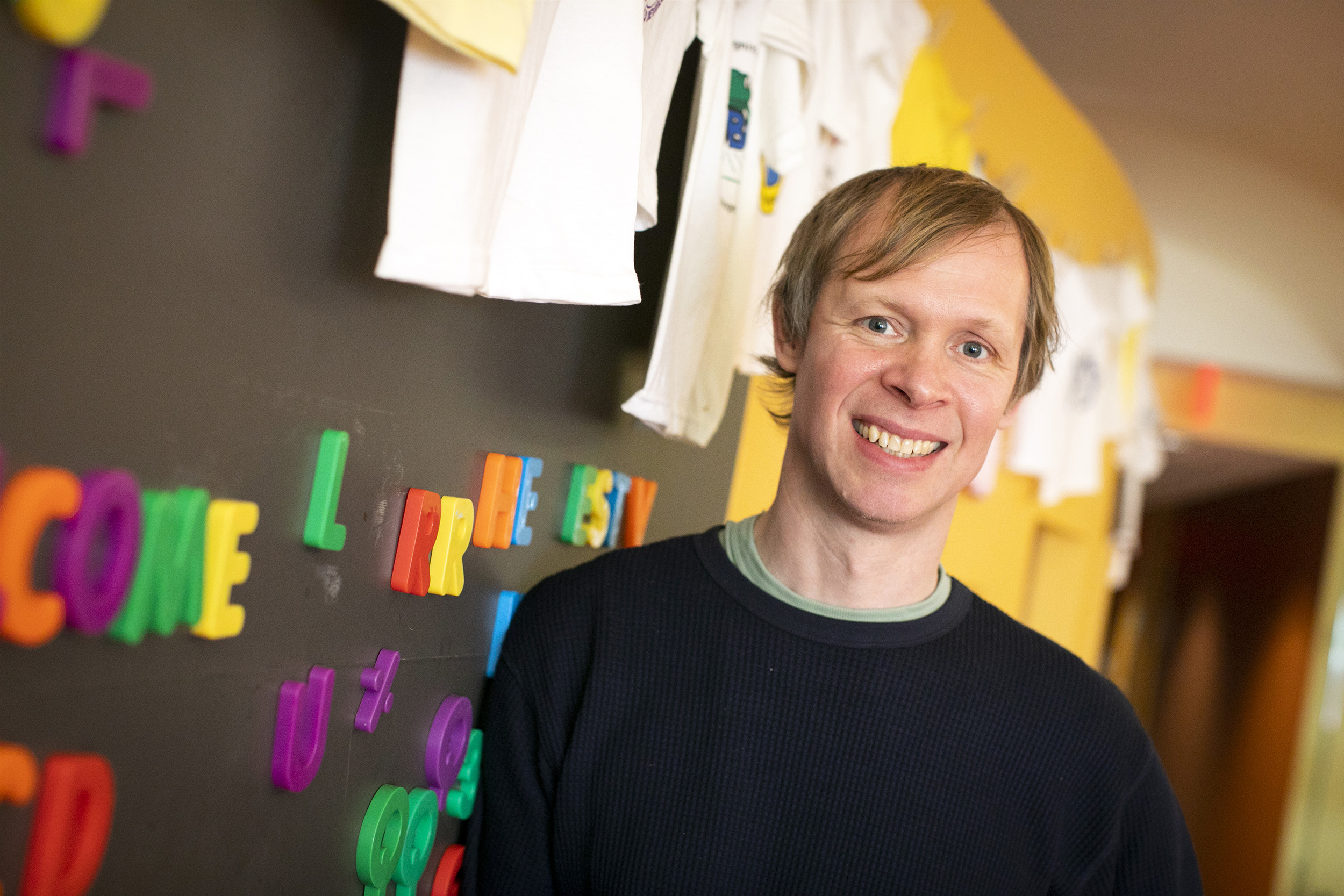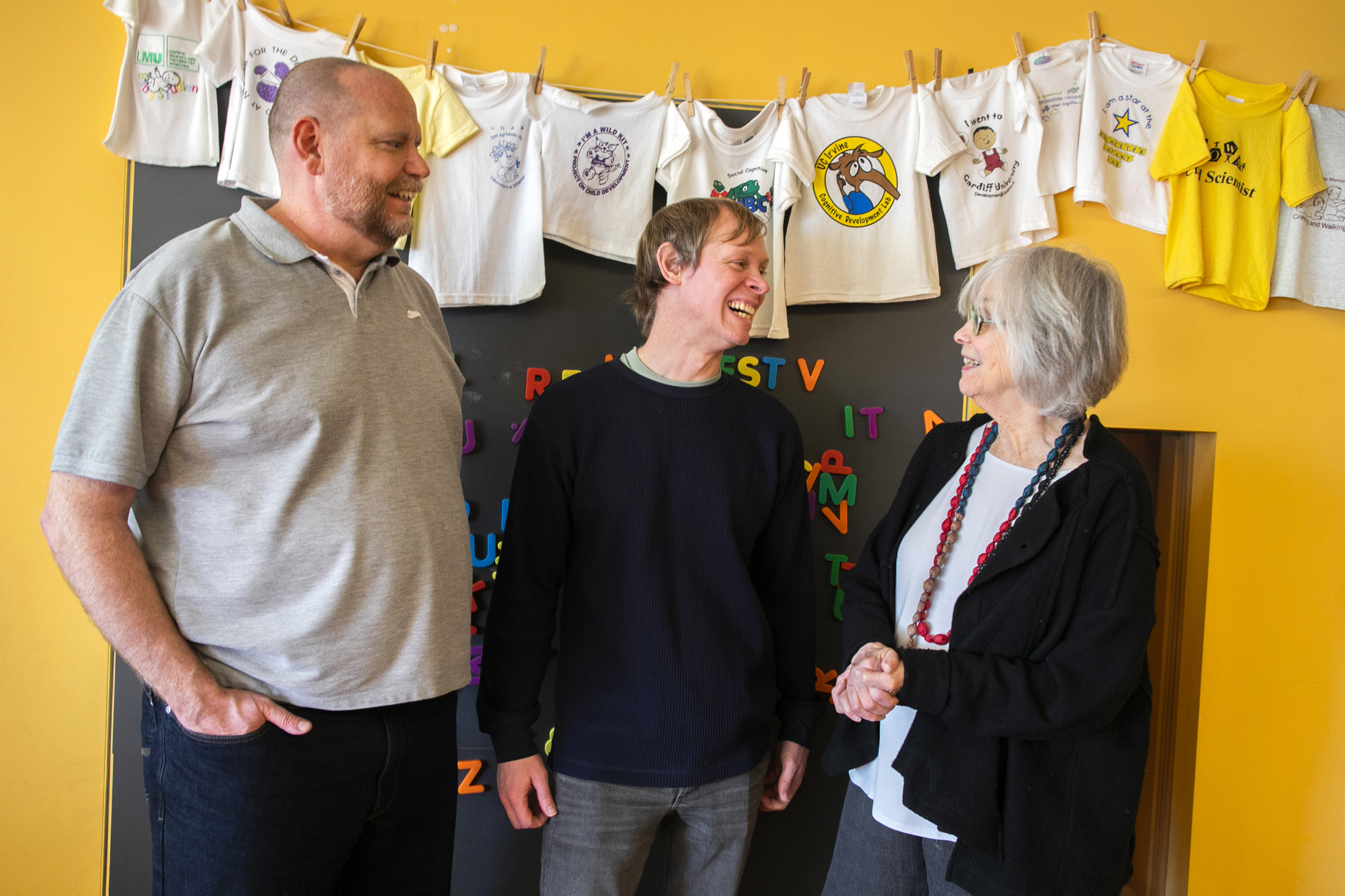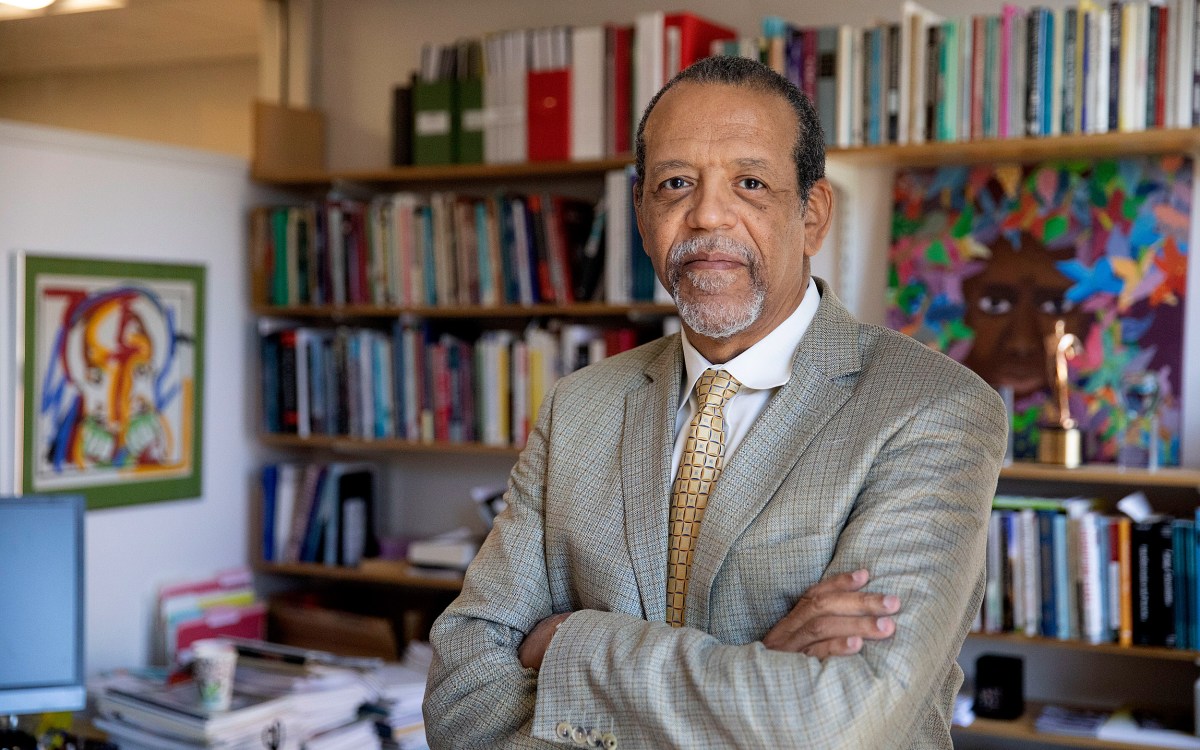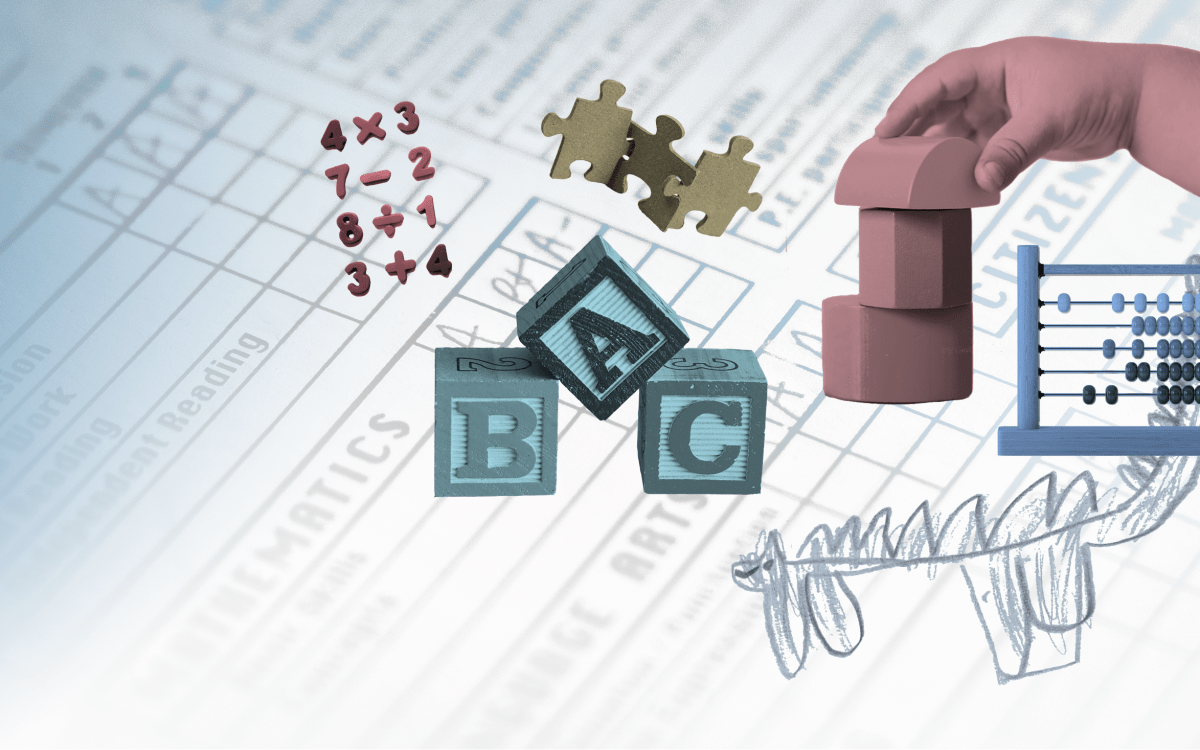
Brian Leahy, lead author of a study on how 3-year-olds weigh multiple possibilities, said that when faced with competing options, preschoolers “find one state that is merely possible and treat it as fact.”
Stephanie Mitchell/Harvard Staff Photographer
Which hand has the treat? Preschoolers get that, but more options confound.
Harvard researchers uncover pattern in developmental psychology of 3-year-olds
Most parents have played the “Which hand has the treat?” game with their preschoolers. Kids get that the choice is binary — it’s either in one hand or the other. But what if instead of two options there were three? And suppose there were two treats, with two options grouped together and the third spaced a short distance away? How would the child decide which to pick?
It turns out preschoolers lack the ability to weigh multiple possibilities, and now Harvard psychologists say they have data to support the claim.
A paper recently published in the Proceedings of the National Academy of Sciences finds 3-year-olds struggle to keep track of competing options. “Instead what they do is find one state that is merely possible and treat it as fact,” explained lead author Brian Leahy.
Leahy, a Graduate School of Arts and Sciences student in the Department of Psychology, predicted this behavior three years ago in a separate paper authored with his adviser, psychology Professor Susan E. Carey. The researchers saw “an apparent conflict” in developmental psychology regarding how children take possibilities into account. Infants have been shown in some studies to run mental simulations and even generate hypotheses; other research finds preschoolers struggling when possibility becomes plural.
The issue is resolved, Leahy and Carey wrote in 2020, by distinguishing between “modal” and “minimal representations of possibility.” That is, they hypothesize that preschoolers don’t deploy what philosophers call “modal logic,” the ability to decipher certainty from uncertainty, necessary from unnecessary. Instead, kids find one possibility and mentally mark it as truth.
Next, Leahy and Carey set out to test the idea, with their hypothesis predicting how three sets of 3-year-olds would perform in a series of experiments. Joining the project at this stage were Michael Huemer, a postdoc researcher in Carey’s Lab, as well as research assistant Matt Steele and Stephanie Alderete, then a student at the College and now is a U.C. Berkeley graduate student.

Researchers Michael Huemer (from left), Brian Leahy, and Susan E. Carey conducted a series of experiments that asked preschoolers to deduce which of three cups contained hidden prizes.
Stephanie Mitchell/Harvard Staff Photographer
In the first part of their study, researchers replicated existing data on a “Pick 1 of 3” exercise. Imagine three cups on a tiny stage — one off to its own at stage left, two grouped together at stage right. Suddenly, the curtain lowers over the single cup, and a prize is hidden there. Next, the curtain lowers over the pair, and another prize goes there. Finally, when all three cups are visible again, two dozen 3-year-olds are told to pick one cup to get a prize.
“If you really want a prize, the smart thing to do is to choose the singleton,” said Leahy, who also holds a doctorate in philosophy. But in order to understand that wisdom, children need to understand that the solo cup represents one possibility, while the pair represents two. According to the “minimal representations of possibility” hypothesis, kids instead form a belief about which member of the pair holds a prize. So they see two equally good options: the singleton, and their chosen member of the pair. They will choose randomly between these two options.
(Spoiler: The 3-year-olds ended up going for the single cup about half of the time.)
According to Leahy, the “Pick 1 of 3” exercise points to two hypotheses: Either the children rely on the “minimal” strategy or else they aren’t thinking about possibilities at all: They randomly choose one of the prizes to search for, or they randomly choose one set of cups to explore.
A second study ruled out the second hypothesis. It used the same setup, with one prize hidden in the single cup and another in the pair. This time two dozen 3-year-olds were asked to throw away one and keep the contents of the remaining two. The researchers predicted more success in the “Throw Away” task. After all, their hypothesis holds that 3-year-olds formed beliefs about which cup in the pair contained a prize. That meant a parallel belief about which was empty — always a member of the pair.
And indeed 95 percent discarded from the pair.
The final part of the study asked 3-year-olds to throw away a cup before picking one of the remaining two, again with the goal of getting a prize. Even though 3-year-olds almost always threw away from the pair, they were split 50/50 on picking the singleton or a member of the pair.
The results make a strong case for the “minimal representations of possibility” hypothesis, leaving Leahy eager to dig further into how the ability to think about what might and might not happen even develops. “This was a pretty complex pattern of data,” he noted. “And we predicted it exactly!”








